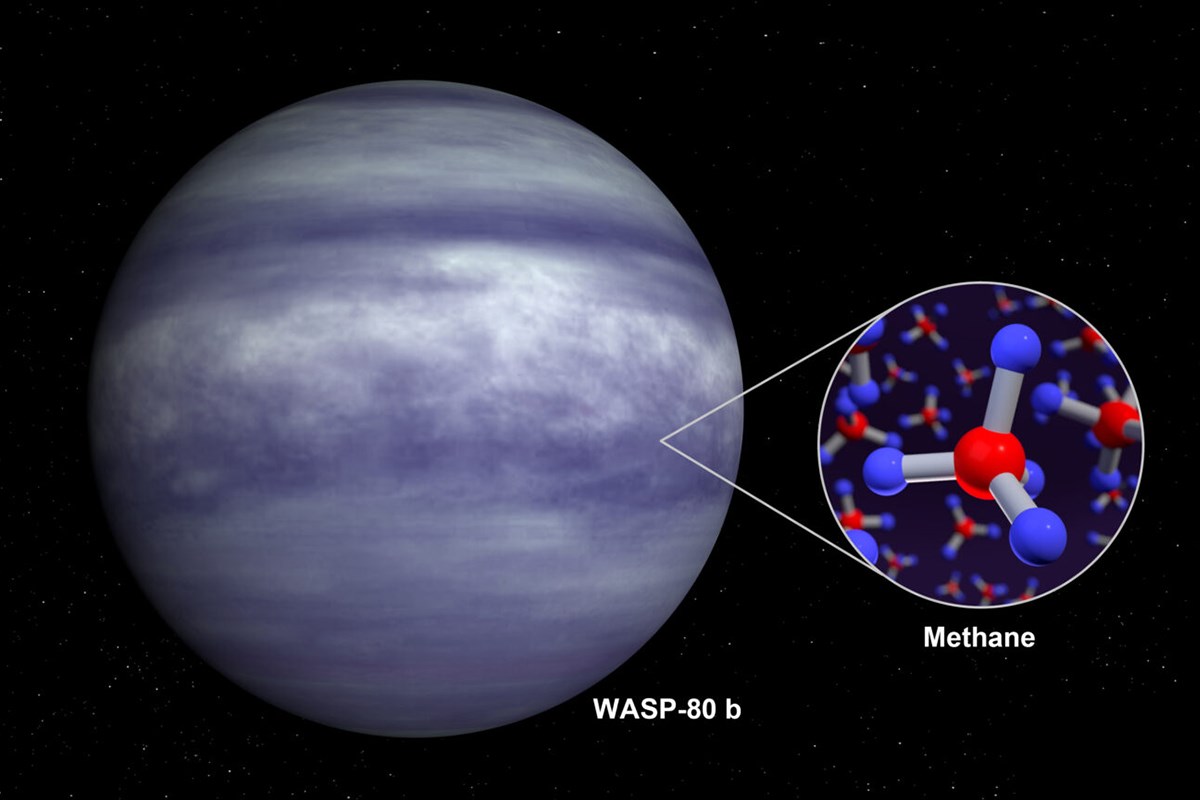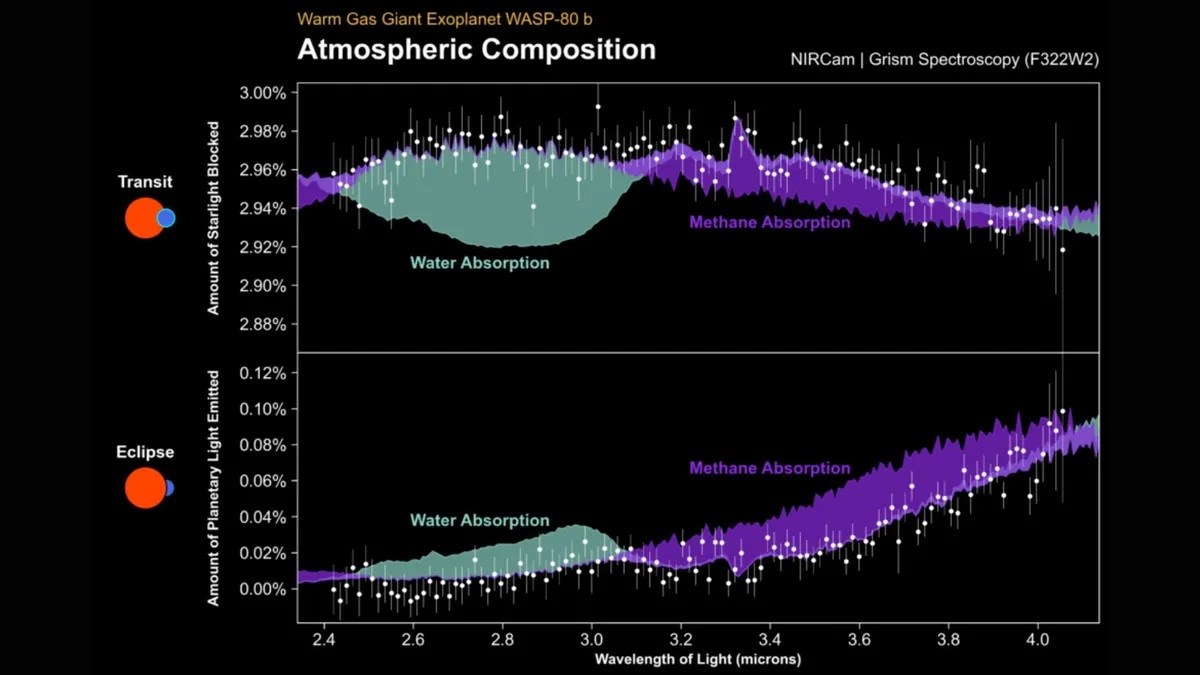 The James Webb Space Telescope (JWST) has detected methane and water vapor in the atmosphere of a Jupiter-like world located approximately 163 light-years away. Astronomers made the discovery by watching an exoplanet, or “exoplanet,” called WASP-80 b, pass in front of the parent red dwarf star it orbits about every 3 Earth days.
The James Webb Space Telescope (JWST) has detected methane and water vapor in the atmosphere of a Jupiter-like world located approximately 163 light-years away. Astronomers made the discovery by watching an exoplanet, or “exoplanet,” called WASP-80 b, pass in front of the parent red dwarf star it orbits about every 3 Earth days.In a groundbreaking discovery, NASA’s James Webb Space Telescope has managed to reveal the atmospheric secrets of exoplanet WASP-80 b. JWST observed the distant planet as it passed both in front of and behind its host star. The observations revealed a distinctive spectrum indicating an atmosphere rich in methane gas and water vapor.
Methane detected for the first time
Although water vapor has been detected on many exoplanets before, methane has not been detected until now. Therefore, this discovery is of great importance in understanding the atmospheric structures of planets. Classified as a “hot Jupiter” due to its temperature of approximately 551 degrees Celsius, WASP-80 b orbits the red dwarf star 163 light-years away in the constellation Aquila every three days. The exoplanet is very difficult to observe directly due to its closeness to its star and distance from Earth.
Instead, using transit and eclipse methods, scientists observed the pattern of starlight as the planet moved in front and behind its star, respectively. With these methods, the composition of the atmosphere and molecular determination can be made.
 To analyze the observations, the researchers converted the raw data into spectra and measured how much light at different wavelengths was blocked or emitted by the planet’s atmosphere. Two different modeling approaches were used to simulate the extreme conditions of the exoplanet’s atmosphere, and both pointed to a definitive finding of methane.
To analyze the observations, the researchers converted the raw data into spectra and measured how much light at different wavelengths was blocked or emitted by the planet’s atmosphere. Two different modeling approaches were used to simulate the extreme conditions of the exoplanet’s atmosphere, and both pointed to a definitive finding of methane.This discovery provides a unique opportunity to compare exoplanets with those in our Solar system. Scientists can make a strong comparison by measuring levels of methane, a molecule abundant in the atmospheres of gas giants in our solar system.
Looking forward, the team aims to further investigate WASP-80 b’s atmosphere at different wavelengths with additional observations using Webb’s MIRI and NIRCam instruments. The researchers hope to detect other carbon-rich molecules, such as carbon monoxide and carbon dioxide, in future observations. Detecting such molecules on exoplanets could provide deep insights into understanding how chemistry and physics work under different conditions.